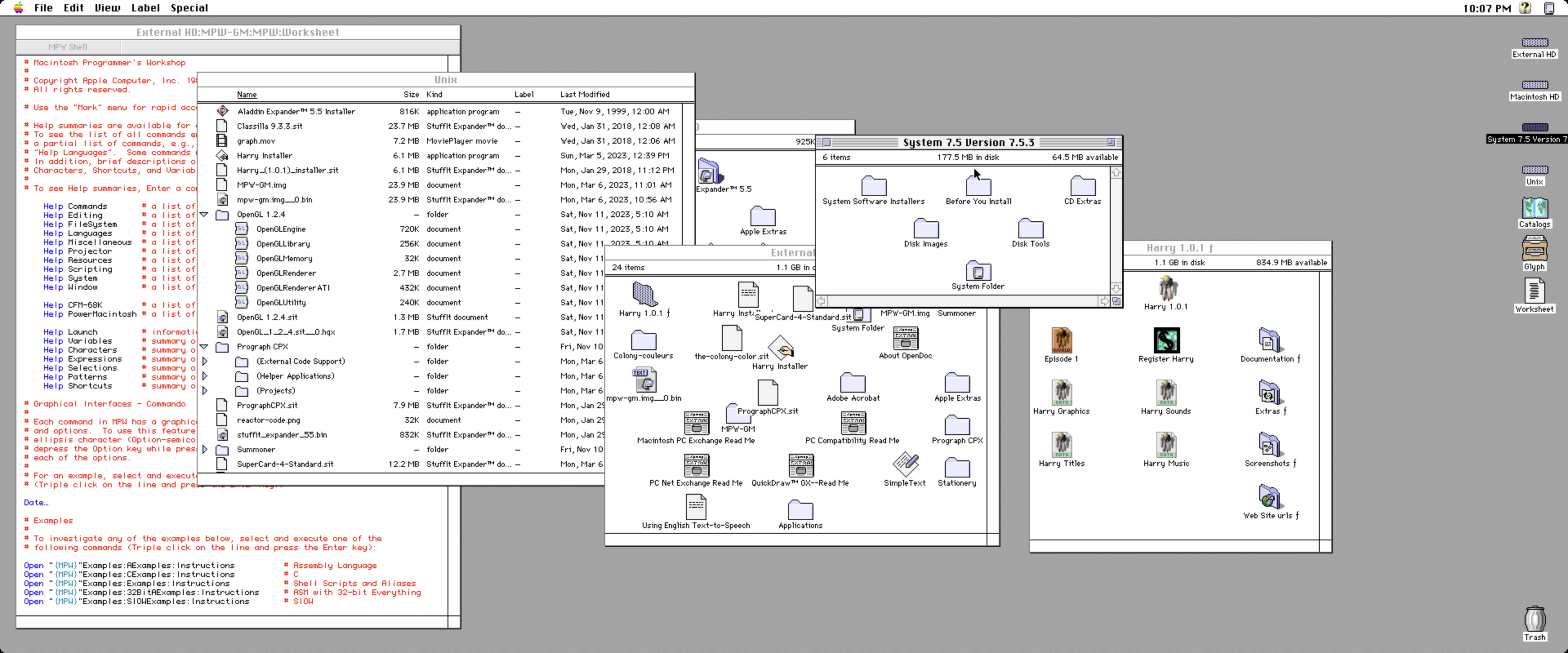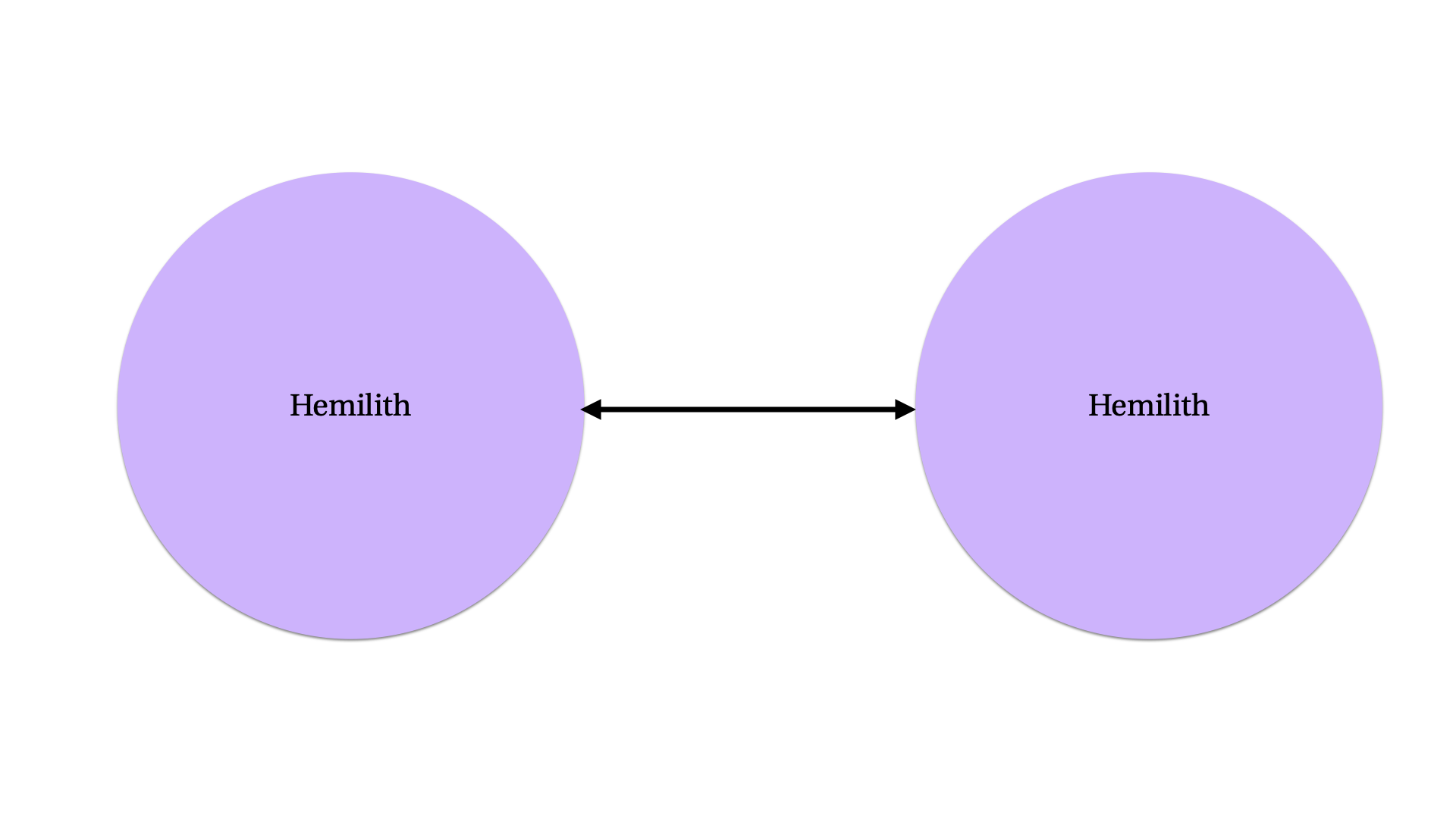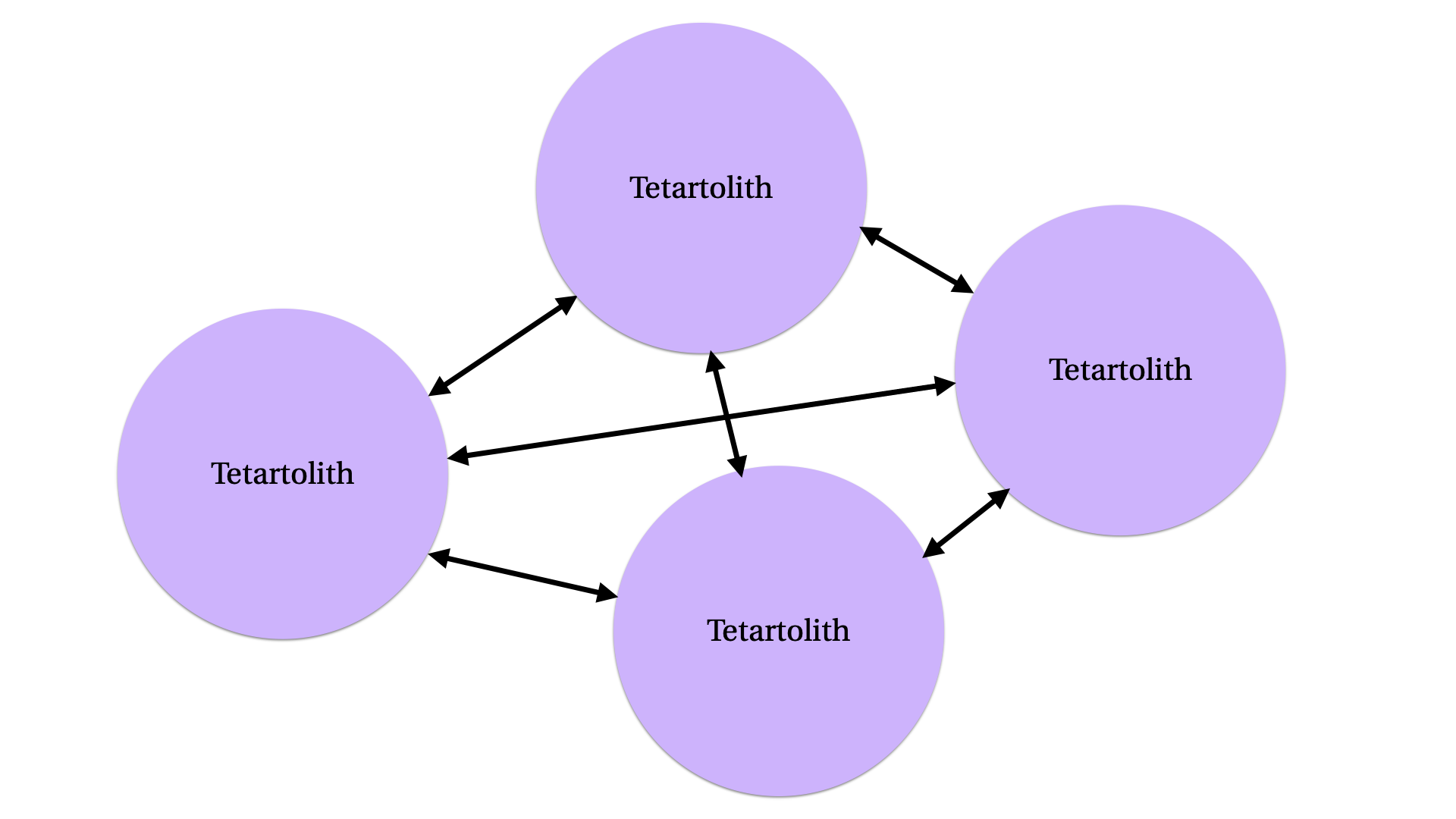The Problem
Like many other self-styled thinky programmer guys, I like to imagine myself as a sort of Holmesian genius, making trenchant observations, collecting them, and then synergizing them into brilliant deductions with the keen application of my powerful mind.
However, several years ago, I had an epiphany in my self-concept. I finally understood that, to the extent that I am usefully clever, it is less in a Holmesian idiom, and more, shall we say, Monkesque.
For those unfamiliar with either of the respective franchises:
- Holmes is a towering intellect honed by years of training, who catalogues intentional, systematic observations and deduces logical, factual conclusions from those observations.
- Monk, on the other hand, while also a reasonably intelligent guy, is highly neurotic, wracked by unresolved trauma and profound grief. As both a consulting job and a coping mechanism, he makes a habit of erratically wandering into crime scenes, and, driven by a carefully managed jenga tower of mental illnesses, leverages his dual inabilities to solve crimes. First, he is unable to filter out apparently inconsequential details, building up a mental rat’s nest of trivia about the problem; second, he is unable to let go of any minor incongruity, obsessively ruminating on the collection of facts until they all make sense in a consistent timeline.
Perhaps surprisingly, this tendency serves both this fictional wretch of a detective, and myself, reasonably well. I find annoying incongruities in abstractions and I fidget and fiddle with them until I end up building something that a lot of people like, or perhaps something that a smaller number of people get really excited about. At worst, at least I eventually understand what’s going on. This is a self-soothing activity but it turns out that, managed properly, it can very effectively soothe others as well.
All that brings us to today’s topic, which is an incongruity I cannot smooth out or fit into a logical framework to make sense. I am, somewhat reluctantly, a genAI skeptic. However, I am, even more reluctantly, exposed to genAI Discourse every damn minute of every damn day. It is relentless, inescapable, and exhausting.
This preamble about personality should hopefully help you, dear reader, to understand how I usually address problematical ideas by thinking and thinking and fidgeting with them until I manage to write some words — or perhaps a new open source package — that logically orders the ideas around it in a way which allows my brain to calm down and let it go, and how that process is important to me.
In this particular instance, however, genAI has defeated me. I cannot make it make sense, but I need to stop thinking about it anyway. It is too much and I need to give up.
My goal with this post is not to convince anyone of anything in particular — and we’ll get to why that is a bit later — but rather:
- to set out my current understanding in one place, including all the various negative feelings which are still bothering me, so I can stop repeating it elsewhere,
- to explain why I cannot build a case that I think should be particularly convincing to anyone else, particularly to someone who actively disagrees with me,
- in so doing, to illustrate why I think the discourse is so fractious and unresolvable, and finally
- to give myself, and hopefully by proxy to give others in the same situation, permission to just peace out of this nightmare quagmire corner of the noosphere.
But first, just because I can’t prove that my interlocutors are Wrong On The Internet, doesn’t mean I won’t explain why I feel like they are wrong.
The Anti-Antis
Most recently, at time of writing, there have been a spate of “the genAI discourse is bad” articles, almost exclusively written from the perspective of, not boosters exactly, but pragmatically minded (albeit concerned) genAI users, wishing for the skeptics to be more pointed and accurate in our critiques. This is anti-anti-genAI content.
I am not going to link to any of these, because, as part of their self-fulfilling prophecy about the “genAI discourse”, they’re also all bad.
Mostly, however, they had very little worthwhile to respond to because they were straw-manning their erstwhile interlocutors. They are all getting annoyed at “bad genAI criticism” while failing to engage with — and often failing to even mention — most of the actual substance of any serious genAI criticism. At least, any of the criticism that I’ve personally read.
I understand wanting to avoid a callout or Gish-gallop culture and just express your own ideas. So, I understand that they didn’t link directly to particular sources or go point-by-point on anyone else’s writing. Obviously I get it, since that’s exactly what this post is doing too.
But if you’re going to talk about how bad the genAI conversation is, without even mentioning huge categories of problem like “climate impact” or “disinformation”1 even once, I honestly don’t know what conversation you’re even talking about. This is peak “make up a guy to get mad at” behavior, which is especially confusing in this circumstance, because there’s an absolutely huge crowd of actual people that you could already be mad at.
The people writing these pieces have historically seemed very thoughtful to me. Some of them I know personally. It is worrying to me that their critical thinking skills appear to have substantially degraded specifically after spending a bunch of time intensely using this technology which I believe has a scary risk of degrading one’s critical thinking skills. Correlation is not causation or whatever, and sure, from a rhetorical perspective this is “post hoc ergo propter hoc” and maybe a little “ad hominem” for good measure, but correlation can still be concerning.
Yet, I cannot effectively respond to these folks, because they are making a practical argument that I cannot, despite my best efforts, find compelling evidence to refute categorically. My experiences of genAI are all extremely bad, but that is barely even anecdata. Their experiences are neutral-to-positive. Little scientific data exists. How to resolve this?2
The Aesthetics
As I begin to state my own position, let me lead with this: my factual analysis of genAI is hopelessly negatively biased. I find the vast majority of the aesthetic properties of genAI to be intensely unpleasant.
I have been trying very hard to correct for this bias, to try to pay attention to the facts and to have a clear-eyed view of these systems’ capabilities. But the feelings are visceral, and the effort to compensate is tiring. It is, in fact, the desire to stop making this particular kind of effort that has me writing up this piece and trying to take an intentional break from the subject, despite its intense relevance.
When I say its “aesthetic qualities” are unpleasant, I don’t just mean the aesthetic elements of output of genAIs themselves. The aesthetic quality of genAI writing, visual design, animation and so on, while mostly atrocious, is also highly variable. There are cherry-picked examples which look… fine. Maybe even good. For years now, there have been, famously, literally award-winning aesthetic outputs of genAI3.
While I am ideologically predisposed to see any “good” genAI art as accruing the benefits of either a survivorship bias from thousands of terrible outputs or simple plagiarism rather than its own inherent quality, I cannot deny that in many cases it is “good”.
However, I am not just talking about the product, but the process; the aesthetic experience of interfacing with the genAI system itself, rather than the aesthetic experience of the outputs of that system.
I am not a visual artist and I am not really a writer4, particularly not a writer of fiction or anything else whose experience is primarily aesthetic. So I will speak directly to the experience of software development.
I have seen very few successful examples of using genAI to produce whole, working systems. There are no shortage of highly public miserable failures, particularly from the vendors of these systems themselves, where the outputs are confused, self-contradictory, full of subtle errors and generally unusable. While few studies exist, it sure looks like this is an automated way of producing a Net Negative Productivity Programmer, throwing out chaff to slow down the rest of the team.5
Juxtapose this with my aforementioned psychological motivations, to wit, I want to have everything in the computer be orderly and make sense, I’m sure most of you would have no trouble imagining that sitting through this sort of practice would make me extremely unhappy.
Despite this plethora of negative experiences, executives are aggressively mandating the use of AI6. It looks like without such mandates, most people will not bother to use such tools, so the executives will need muscular policies to enforce its use.7
Being forced to sit and argue with a robot while it struggles and fails to produce a working output, while you have to rewrite the code at the end anyway, is incredibly demoralizing. This is the kind of activity that activates every single major cause of burnout at once.
But, at least in that scenario, the thing ultimately doesn’t work, so there’s a hope that after a very stressful six month pilot program, you can go to management with a pile of meticulously collected evidence, and shut the whole thing down.
I am inclined to believe that, in fact, it doesn’t work well enough to be used this way, and that we are going to see a big crash. But that is not the most aesthetically distressing thing. The most distressing thing is that maybe it does work; if not well enough to actually do the work, at least ambiguously enough to fool the executives long-term.
This project, in particular, stood out to me as an example. Its author, a self-professed “AI skeptic” who “thought LLMs were glorified Markov chain generators that didn’t actually understand code and couldn’t produce anything novel”, did a green-field project to test this hypothesis.
Now, this particular project is not totally inconsistent with a world in which LLMs cannot produce anything novel. One could imagine that, out in the world of open source, perhaps there is enough “OAuth provider written in TypeScript” blended up into the slurry of “borrowed8” training data that the minor constraint of “make it work on Cloudflare Workers” is a small tweak9. It is not fully dispositive of the question of the viability of “genAI coding”.
But it is a data point related to that question, and thus it did make me contend with what might happen if it were actually a fully demonstrative example. I reviewed the commit history, as the author suggested. For the sake of argument, I tried to ask myself if I would like working this way. Just for clarity on this question, I wanted to suspend judgement about everything else; assuming:
- the model could be created with ethically, legally, voluntarily sourced training data
- its usage involved consent from labor rather than authoritarian mandates
- sensible levels of energy expenditure, with minimal CO2 impact
- it is substantially more efficient to work this way than to just write the code yourself
and so on, and so on… would I like to use this magic robot that could mostly just emit working code for me? Would I use it if it were free, in all senses of the word?
No. I absolutely would not.
I found the experience of reading this commit history and imagining myself using such a tool — without exaggeration — nauseating.
Unlike many programmers, I love code review. I find that it is one of the best parts of the process of programming. I can help people learn, and develop their skills, and learn from them, and appreciate the decisions they made, develop an impression of a fellow programmer’s style. It’s a great way to build a mutual theory of mind.
Of course, it can still be really annoying; people make mistakes, often can’t see things I find obvious, and in particular when you’re reviewing a lot of code from a lot of different people, you often end up having to repeat explanations of the same mistakes. So I can see why many programmers, particularly those more introverted than I am, hate it.
But, ultimately, when I review their code and work hard to provide clear and actionable feedback, people learn and grow and it’s worth that investment in inconvenience.
The process of coding with an “agentic” LLM appears to be the process of carefully distilling all the worst parts of code review, and removing and discarding all of its benefits.
The lazy, dumb, lying robot asshole keeps making the same mistakes over and over again, never improving, never genuinely reacting, always obsequiously pretending to take your feedback on board.
Even when it “does” actually “understand” and manages to load your instructions into its context window, 200K tokens later it will slide cleanly out of its memory and you will have to say it again.
All the while, it is attempting to trick you. It gets most things right, but it consistently makes mistakes in the places that you are least likely to notice. In places where a person wouldn’t make a mistake. Your brain keeps trying to develop a theory of mind to predict its behavior but there’s no mind there, so it always behaves infuriatingly randomly.
I don’t think I am the only one who feels this way.
The Affordances
Whatever our environments afford, we tend to do more of. Whatever they resist, we tend to do less of. So in a world where we were all writing all of our code and emails and blog posts and texts to each other with LLMs, what do they afford that existing tools do not?
As a weirdo who enjoys code review, I also enjoy process engineering. The central question of almost all process engineering is to continuously ask: how shall we shape our tools, to better shape ourselves?
LLMs are an affordance for producing more text, faster. How is that going to shape us?
Again arguing in the alternative here, assuming the text is free from errors and hallucinations and whatever, it’s all correct and fit for purpose, that means it reduces the pain of circumstances where you have to repeat yourself. Less pain! Sounds great; I don’t like pain.
Every codebase has places where you need boilerplate. Every organization has defects in its information architecture that require repetition of certain information rather than a link back to the authoritative source of truth. Often, these problems persist for a very long time, because it is difficult to overcome the institutional inertia required to make real progress rather than going along with the status quo. But this is often where the highest-value projects can be found. Where there’s muck, there’s brass.
The process-engineering function of an LLM, therefore, is to prevent fundamental problems from ever getting fixed, to reward the rapid-fire overwhelm of infrastructure teams with an immediate, catastrophic cascade of legacy code that is now much harder to delete than it is to write.
There is a scene in Game of Thrones where Khal Drogo kills himself. He does so by replacing a stinging, burning, therapeutic antiseptic wound dressing with some cool, soothing mud. The mud felt nice, addressed the immediate pain, removed the discomfort of the antiseptic, and immediately gave him a lethal infection.
The pleasing feeling of immediate progress when one prompts an LLM to solve some problem feels like cool mud on my brain.
The Economics
We are in the middle of a mania around this technology. As I have written about before, I believe the mania will end. There will then be a crash, and a “winter”. But, as I may not have stressed sufficiently, this crash will be the biggest of its kind — so big, that it is arguably not of a kind at all. The level of investment in these technologies is bananas and the possibility that the investors will recoup their investment seems close to zero. Meanwhile, that cost keeps going up, and up, and up.
Others have reported on this in detail10, and I will not reiterate that all here, but in addition to being a looming and scary industry-wide (if we are lucky; more likely it’s probably “world-wide”) economic threat, it is also going to drive some panicked behavior from management.
Panicky behavior from management stressed that their idea is not panning out is, famously, the cause of much human misery. I expect that even in the “good” scenario, where some profit is ultimately achieved, will still involve mass layoffs rocking the industry, panicked re-hiring, destruction of large amounts of wealth.
It feels bad to think about this.
The Energy Usage
For a long time I believed that the energy impact was overstated. I am even on record, about a year ago, saying I didn’t think the energy usage was a big deal. I think I was wrong about that.
It initially seemed like it was letting regular old data centers off the hook. But recently I have learned that, while the numbers are incomplete because the vendors aren’t sharing information, they’re also extremely bad.11
I think there’s probably a version of this technology that isn’t a climate emergency nightmare, but that’s not the version that the general public has access to today.
The Educational Impact
LLMs are making academic cheating incredibly rampant.12
Not only is it so common as to be nearly universal, it’s also extremely harmful to learning.13
For learning, genAI is a forklift at the gym.
To some extent, LLMs are simply revealing a structural rot within education and academia that has been building for decades if not centuries. But it was within those inefficiencies and the inconveniences of the academic experience that real learning was, against all odds, still happening in schools.
LLMs produce a frictionless, streamlined process where students can effortlessly glide through the entire credential, learning nothing. Once again, they dull the pain without regard to its cause.
This is not good.
The Invasion of Privacy
This is obviously only a problem with the big cloud models, but then, the big cloud models are the only ones that people actually use. If you are having conversations about anything private with ChatGPT, you are sending all of that private information directly to Sam Altman, to do with as he wishes.
Even if you don’t think he is a particularly bad guy, maybe he won’t even create the privacy nightmare on purpose. Maybe he will be forced to do so as a result of some bizarre kafkaesque accident.14
Imagine the scenario, for example, where a woman is tracking her cycle and uploading the logs to ChatGPT so she can chat with it about a health concern. Except, surprise, you don’t have to imagine, you can just search for it, as I have personally, organically, seen three separate women on YouTube, at least one of whom lives in Texas, not only do this on camera but recommend doing this to their audiences.
Citation links withheld on this particular claim for hopefully obvious reasons.
I assure you that I am neither particularly interested in menstrual products nor genAI content, and if I am seeing this more than once, it is probably a distressingly large trend.
The Stealing
The training data for LLMs is stolen. I don’t mean like “pirated” in the sense where someone illicitly shares a copy they obtained legitimately; I mean their scrapers are ignoring both norms15 and laws16 to obtain copies under false pretenses, destroying other people’s infrastructure17.
The Fatigue
I have provided references to numerous articles outlining rhetorical and sometimes data-driven cases for the existence of certain properties and consequences of genAI tools. But I can’t prove any of these properties, either at a point in time or as a durable ongoing problem.
The LLMs themselves are simply too large to model with the usual kind of heuristics one would use to think about software. I’d sooner be able to predict the physics of dice in a casino than a 2 trillion parameter neural network. They resist scientific understanding, not just because of their size and complexity, but because unlike a natural phenomenon (which could of course be considerably larger and more complex) they resist experimentation.
The first form of genAI resistance to experiment is that every discussion is a
motte-and-bailey. If
I use a free model and get a bad result I’m told it’s because I should have
used the paid model. If I get a bad result with ChatGPT I should have used
Claude. If I get a bad result with a chatbot I need to start using an agentic
tool. If an agentic tool deletes my hard drive by putting os.system(“rm -rf
~/”) into sitecustomize.py then I guess I should have built my own MCP
integration with a completely novel heretofore never even considered security
sandbox or something?
What configuration, exactly, would let me make a categorical claim about these things? What specific methodological approach should I stick to, to get reliably adequate prompts?
For the record though, if the idea of the free models is that they are going to be provocative demonstrations of the impressive capabilities of the commercial models, and the results are consistently dogshit, I am finding it increasingly hard to care how much better the paid ones are supposed to be, especially since the “better”-ness cannot really be quantified in any meaningful way.
The motte-and-bailey doesn’t stop there though. It’s a war on all fronts. Concerned about energy usage? That’s OK, you can use a local model. Concerned about infringement? That’s okay, somewhere, somebody, maybe, has figured out how to train models consensually18. Worried about the politics of enriching the richest monsters in the world? Don’t worry, you can always download an “open source” model from Hugging Face. It doesn’t matter that many of these properties are mutually exclusive and attempting to fix one breaks two others; there’s always an answer, the field is so abuzz with so many people trying to pull in so many directions at once that it is legitimately difficult to understand what’s going on.
Even here though, I can see that characterizing everything this way is unfair to a hypothetical sort of person. If there is someone working at one of these thousands of AI companies that have been springing up like toadstools after a rain, and they really are solving one of these extremely difficult problems, how can I handwave that away? We need people working on problems, that’s like, the whole point of having an economy. And I really don’t like shitting on other people’s earnest efforts, so I try not to dismiss whole fields. Given how AI has gotten into everything, in a way that e.g. cryptocurrency never did, painting with that broad a brush inevitably ends up tarring a bunch of stuff that isn’t even really AI at all.
The second form of genAI resistance to experiment is the inherent obfuscation of productization. The models themselves are already complicated enough, but the products that are built around the models are evolving extremely rapidly. ChatGPT is not just a “model”, and with the rapid19 deployment of Model Context Protocol tools, the edges of all these things will blur even further. Every LLM is now just an enormous unbounded soup of arbitrary software doing arbitrary whatever. How could I possibly get my arms around that to understand it?
The Challenge
I have woefully little experience with these tools.
I’ve tried them out a little bit, and almost every single time the result has been a disaster that has not made me curious to push further. Yet, I keep hearing from all over the industry that I should.
To some extent, I feel like the motte-and-bailey characterization above is fair; if the technology itself can really do real software development, it ought to be able to do it in multiple modalities, and there’s nothing anyone can articulate to me about GPT-4o which puts it in a fundamentally different class than GPT-3.5.
But, also, I consistently hear that the subjective experience of using the premium versions of the tools is actually good, and the free ones are actually bad.
I keep struggling to find ways to try them “the right way”, the way that people I know and otherwise respect claim to be using them, but I haven’t managed to do so in any meaningful way yet.
I do not want to be using the cloud versions of these models with their potentially hideous energy demands; I’d like to use a local model. But there is obviously not a nicely composed way to use local models like this.
Since there are apparently zero models with ethically-sourced training data, and litigation is ongoing20 to determine the legal relationships of training data and outputs, even if I can be comfortable with some level of plagiarism on a project, I don’t feel that I can introduce the existential legal risk into other people’s infrastructure, so I would need to make a new project.
Others have differing opinions of course, including some within my dependency chain, which does worry me, but I still don’t feel like I can freely contribute further to the problem; it’s going to be bad enough to unwind any impact upstream. Even just for my own sake, I don’t want to make it worse.
This especially presents a problem because I have way too much stuff going on already. A new project is not practical.
Finally, even if I did manage to satisfy all of my quirky21 constraints, would this experiment really be worth anything? The models and tools that people are raving about are the big, expensive, harmful ones. If I proved to myself yet again that a small model with bad tools was unpleasant to use, I wouldn’t really be addressing my opponents’ views.
I’m stuck.
The Surrender
I am writing this piece to make my peace with giving up on this topic, at least for a while. While I do idly hope that some folks might find bits of it convincing, and perhaps find ways to be more mindful with their own usage of genAI tools, and consider the harm they may be causing, that’s not actually the goal. And that is not the goal because it is just so much goddamn work to prove.
Here, I must return to my philosophical hobbyhorse of sprachspiel. In this case, specifically to use it as an analytical tool, not just to understand what I am trying to say, but what the purpose for my speech is.
The concept of sprachspiel is most frequently deployed to describe the goal of the language game being played, but in game theory, that’s only half the story. Speech — particularly rigorously justified speech — has a cost, as well as a benefit. I can make shit up pretty easily, but if I want to do anything remotely like scientific or academic rigor, that cost can be astronomical. In the case of developing an abstract understanding of LLMs, the cost is just too high.
So what is my goal, then? To be king Canute, standing astride the shore of “tech”, whatever that is, commanding the LLM tide not to rise? This is a multi-trillion dollar juggernaut.
Even the rump, loser, also-ran fragment of it has the power to literally suffocate us in our homes22 if they so choose, completely insulated from any consequence. If the power curve starts there, imagine what the winners in this industry are going to be capable of, irrespective of the technology they’re building - just with the resources they have to hand. Am I going to write a blog post that can rival their propaganda apparatus? Doubtful.
Instead, I will just have to concede that maybe I’m wrong. I don’t have the skill, or the knowledge, or the energy, to demonstrate with any level of rigor that LLMs are generally, in fact, hot garbage. Intellectually, I will have to acknowledge that maybe the boosters are right. Maybe it’ll be OK.
Maybe the carbon emissions aren’t so bad. Maybe everybody is keeping them secret in ways that they don’t for other types of datacenter for perfectly legitimate reasons. Maybe the tools really can write novel and correct code, and with a little more tweaking, it won’t be so difficult to get them to do it. Maybe by the time they become a mandatory condition of access to developer tools, they won’t be miserable.
Sure, I even sincerely agree, intellectual property really has been a pretty bad idea from the beginning. Maybe it’s OK that we’ve made an exception to those rules. The rules were stupid anyway, so what does it matter if we let a few billionaires break them? Really, everybody should be able to break them (although of course, regular people can’t, because we can’t afford the lawyers to fight off the MPAA and RIAA, but that’s a problem with the legal system, not tech).
I come not to praise “AI skepticism”, but to bury it.
Maybe it really is all going to be fine. Perhaps I am simply catastrophizing; I have been known to do that from time to time. I can even sort of believe it, in my head. Still, even after writing all this out, I can’t quite manage to believe it in the pit of my stomach.
Unfortunately, that feeling is not something that you, or I, can argue with.
Acknowledgments
Thank you to my patrons. Normally, I would say, “who are supporting my writing on this blog”, but in the case of this piece, I feel more like I should apologize to them for this than to thank them; these thoughts have been preventing me from thinking more productive, useful things that I actually have relevant skill and expertise in; this felt more like a creative blockage that I just needed to expel than a deliberately written article. If you like what you’ve read here and you’d like to read more of it, well, too bad; I am sincerely determined to stop writing about this topic. But, if you’d like to read more stuff like other things I have written, or you’d like to support my various open-source endeavors, you can support my work as a sponsor!
-
And yes, disinformation is still an issue even if you’re “just” using it for coding. Even sidestepping the practical matter that technology is inherently political, validation and propagation of poor technique is a form of disinformation. ↩
-
I can’t resolve it, that’s the whole tragedy here, but I guess we have to pretend I will to maintain narrative momentum here. ↩
-
The story in Creative Bloq, or the NYT, if you must ↩
-
although it’s not for lack of trying, Jesus, look at the word count on this ↩
-
These are sometimes referred to as “10x” programmers, because they make everyone around them 10x slower. ↩
-
Douglas B. Laney at Forbes, Viral Shopify CEO Manifesto Says AI Now Mandatory For All Employees ↩
-
The National CIO Review, AI Mandates, Minimal Use: Closing the Workplace Readiness Gap ↩
-
Matt O’Brien at the AP, Reddit sues AI company Anthropic for allegedly ‘scraping’ user comments to train chatbot Claude ↩
-
Using the usual tricks to find plagiarism like searching for literal transcriptions of snippets of training data did not pull up anything when I tried, but then, that’s not how LLMs work these days, is it? If it didn’t obfuscate the plagiarism it wouldn’t be a very good plagiarism-obfuscator. ↩
-
David Gerard at Pivot to AI, “Microsoft and AI: spending billions to make millions”, Edward Zitron at Where’s Your Ed At, “The Era Of The Business Idiot”, both sobering reads ↩
-
James O’Donnell and Casey Crownhart at the MIT Technology Review, We did the math on AI’s energy footprint. Here’s the story you haven’t heard. ↩
-
Lucas Ropek at Gizmodo, AI Cheating Is So Out of Hand In America’s Schools That the Blue Books Are Coming Back ↩
-
James D. Walsh at the New York Magazine Intelligencer, Everyone Is Cheating Their Way Through College ↩
-
Ashley Belanger at Ars Technica, OpenAI slams court order to save all ChatGPT logs, including deleted chats ↩
-
Ashley Belanger at Ars Technica, AI haters build tarpits to trap and trick AI scrapers that ignore robots.txt ↩
-
Blake Brittain at Reuters, Judge in Meta case warns AI could ‘obliterate’ market for original works ↩
-
Xkeeper, TCRF has been getting DDoSed ↩
-
Kate Knibbs at Wired, Here’s Proof You Can Train an AI Model Without Slurping Copyrighted Content ↩
-
and, I should note, extremely irresponsible ↩
-
Porter Anderson at Publishing Perspectives, Meta AI Lawsuit: US Publishers File Amicus Brief ↩
-
It feels bizarre to characterize what feel like baseline ethical concerns this way, but the fact remains that within the “genAI community”, this places me into a tiny and obscure minority. ↩
-
Ariel Wittenberg for Politico, ‘How come I can’t breathe?’: Musk’s data company draws a backlash in Memphis ↩





